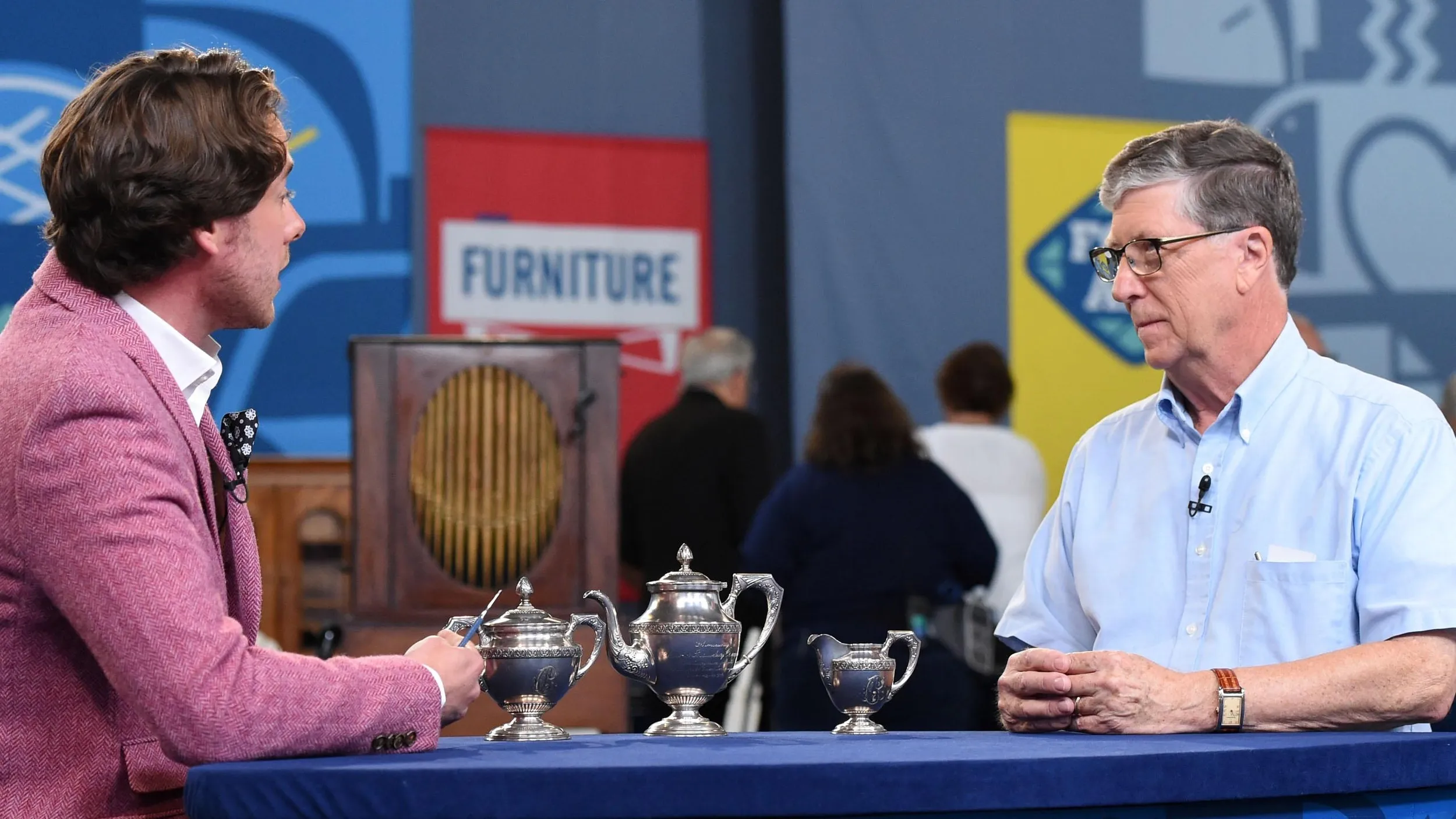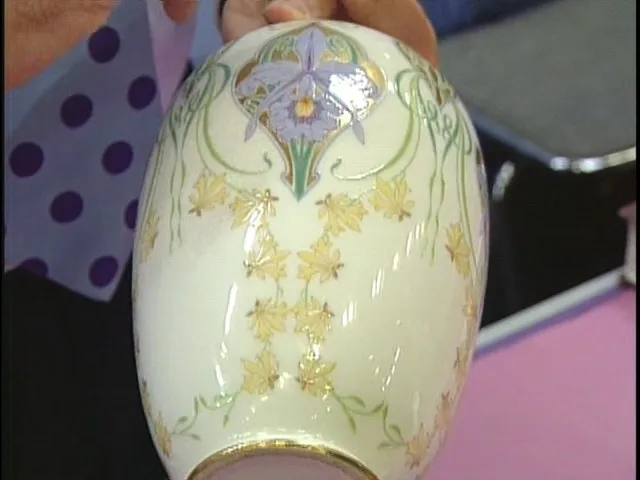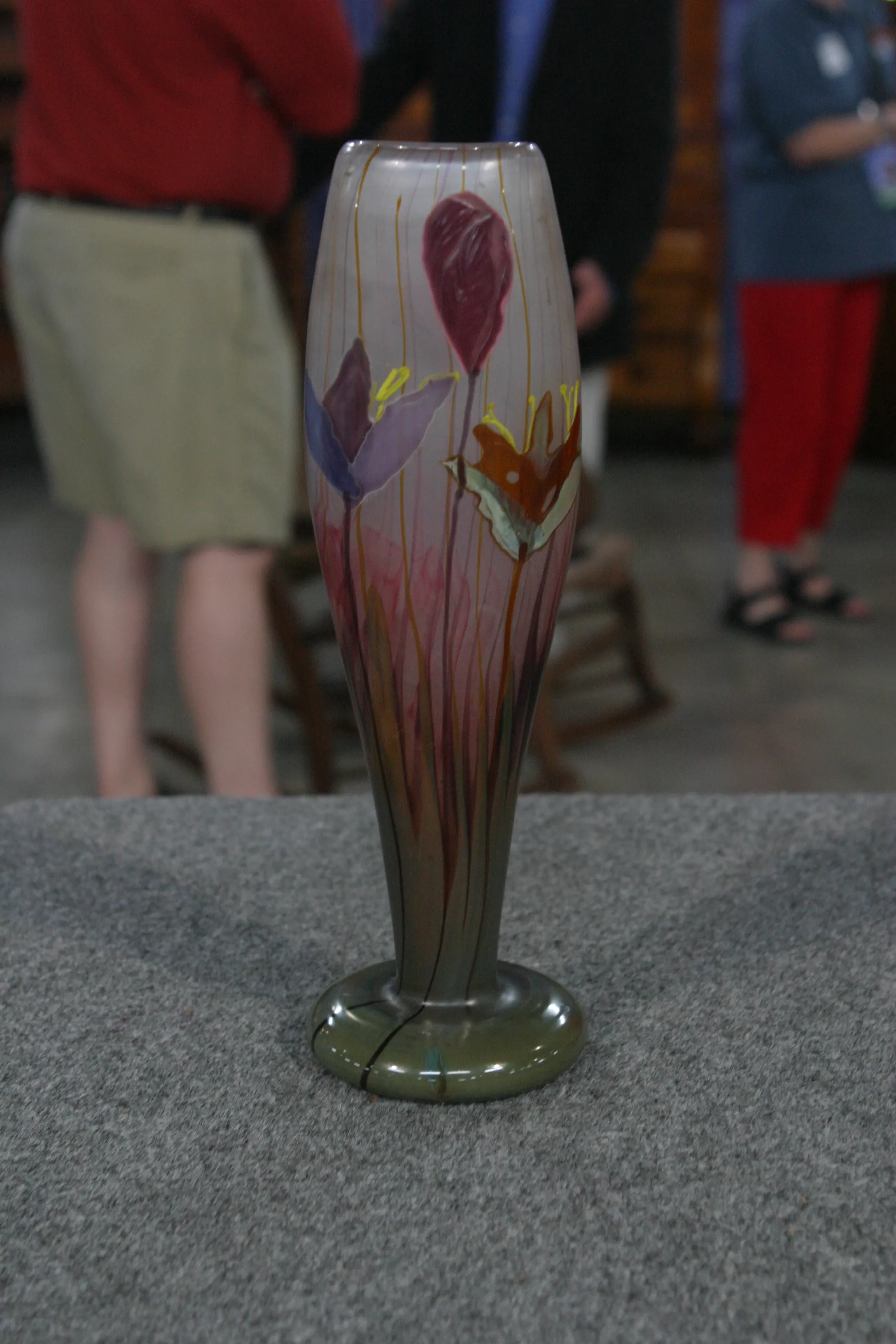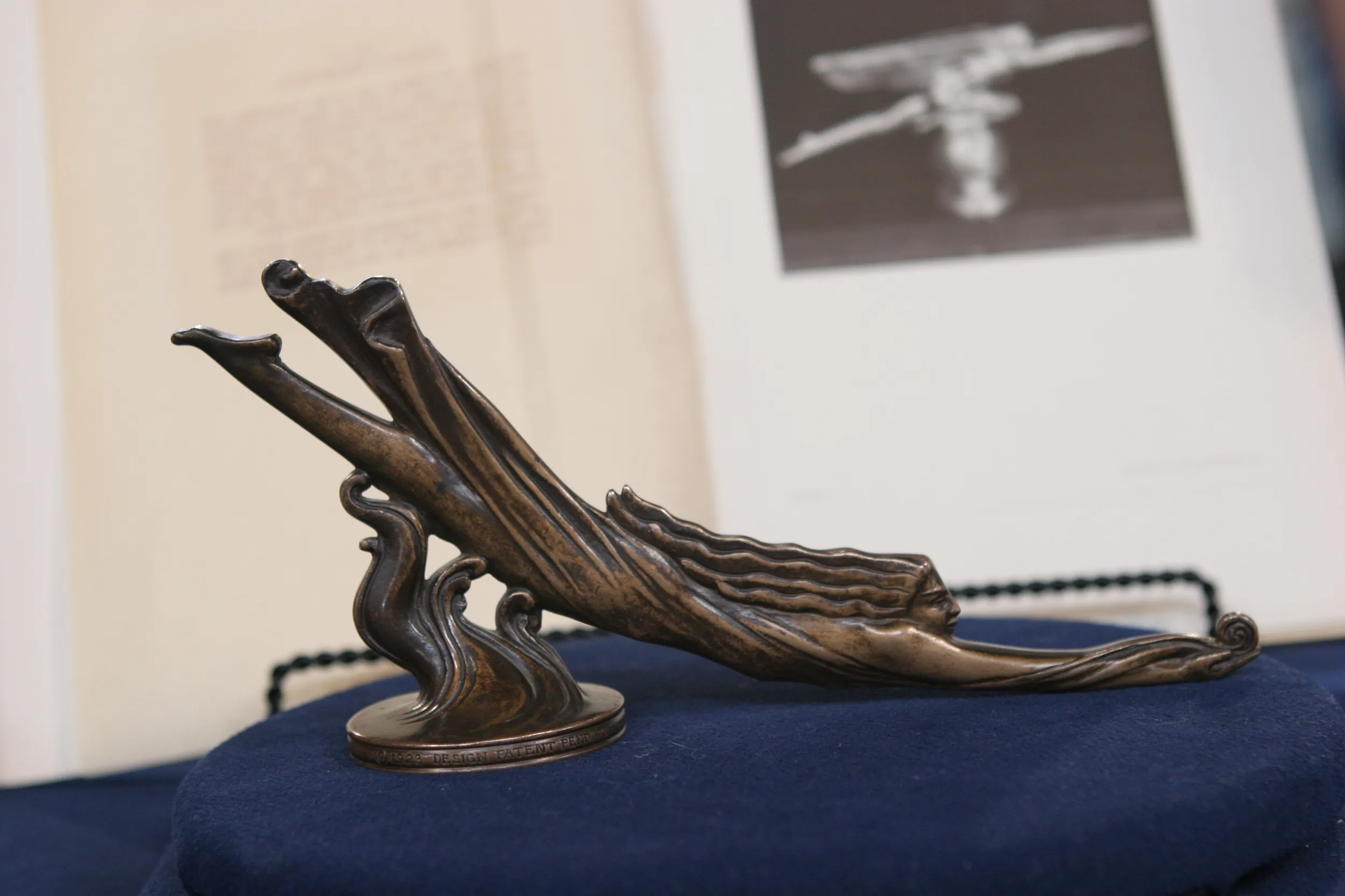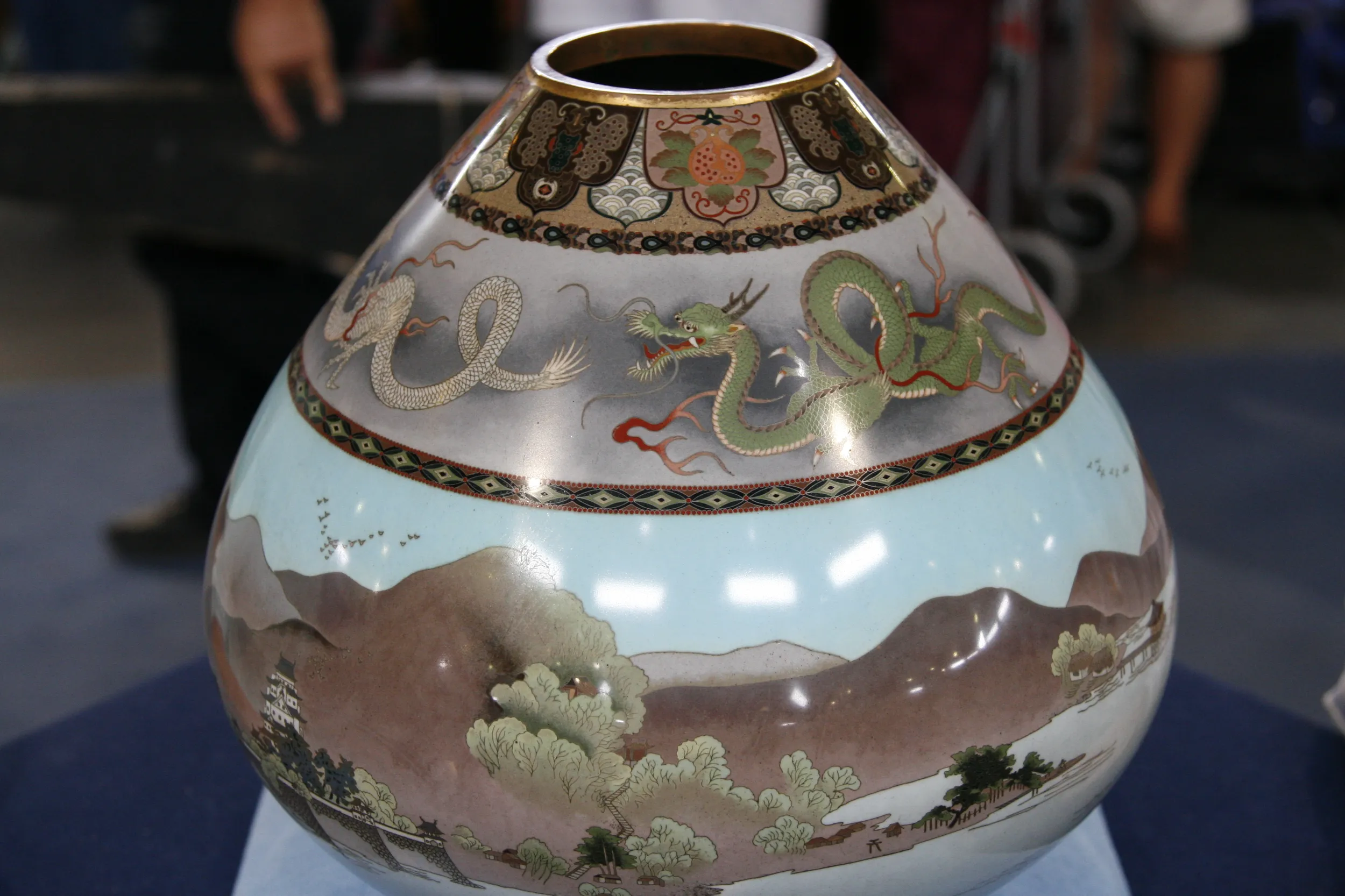APPRAISER: You couldn't find anything smaller to bring today?
GUEST: No, I couldn't, except it has another one the same size, so I only brought one.
APPRAISER: Wow.
GUEST: The other one has castles as opposed to the tents that this one has.
APPRAISER: And are they both the same size otherwise, everything, the same model?
GUEST: Everything the same, handles the same, everything.
APPRAISER: Great-- well, I'd say you don't have two, you have a pair.
GUEST: Okay.
APPRAISER: Tell me a little about how you got them.
GUEST: Well, they came through my father. Many years ago, after the Second World War, one of the Limoges factories opened a plant, and they were going to produce flatware here. After two years it failed. The manager went back to France and he sold these to my father.
APPRAISER: And do you have any idea what your father paid him for them back then?
GUEST: I don't think very much, but I don't know.
APPRAISER: Did he bring them from France with him when he came?
GUEST: Said he did.
APPRAISER: Well, I could believe that, because these, and I'm talking about a pair of them, would have been made kind of 1880. And they were made at the height of the Renaissance Revival period. And at that time, wealthy people, particularly in North America and the United States, were kind of into all things from the Italian Renaissance. And there wasn't enough of the real sort of 16th, 17th century stuff to go around, so Italian manufacturers made… copies, very often authentic copies, of original Renaissance objects. And there was a company in Florence that made and decorated what we call majolica ware. As this is of Italian manufacture, we would call it maiolica, spelled with an "I" in the middle. It's often referred to as majolica, which is a Northern European English Anglicized way of pronouncing it. This is very typical of the work of a company in Florence run by Ulisse Cantagalli. And Cantagalli really specialized in authentically reproducing Italian Renaissance maiolica work. And everything is done the old-fashioned way. The earthenware is tin-glazed. This white background color is achieved by the action of tin oxidizing in the kiln. And then it's painted by hand with these exotic scenes. In this case he's chosen a Medieval battle scene. You can see the scene continues on the back. I particularly like these handles. These are... we would call them gorgon heads, the handles.
And they're finished, as you can see, in red luster. And this lustrous finish is also a characteristic of Cantagalli, and indeed a characteristic of Italian Renaissance maiolica. But everything about it is great. We know it's by Cantagalli, because on the bottom there's a blue painted cockerel, and that's the symbol of Cantagalli's workshop in Florence. We would call this an urn, or a pair of urns, and they were really designed purely to be decorative, to sit on a large pair of pedestals near an entranceway or something like that. And if you just had this one, and it came in, and came to auction, it could bring as much as $2,000 or even $2,500. I'd put it in that range. But because you have a pair, they're actually worth more than twice that.
So I'm going to say a pair, at least $5,000, and perhaps as much as $7,000 at auction.
GUEST: Okay. Well, thank you, and thank you for telling me what they were. I've been trying to figure it out for years.

